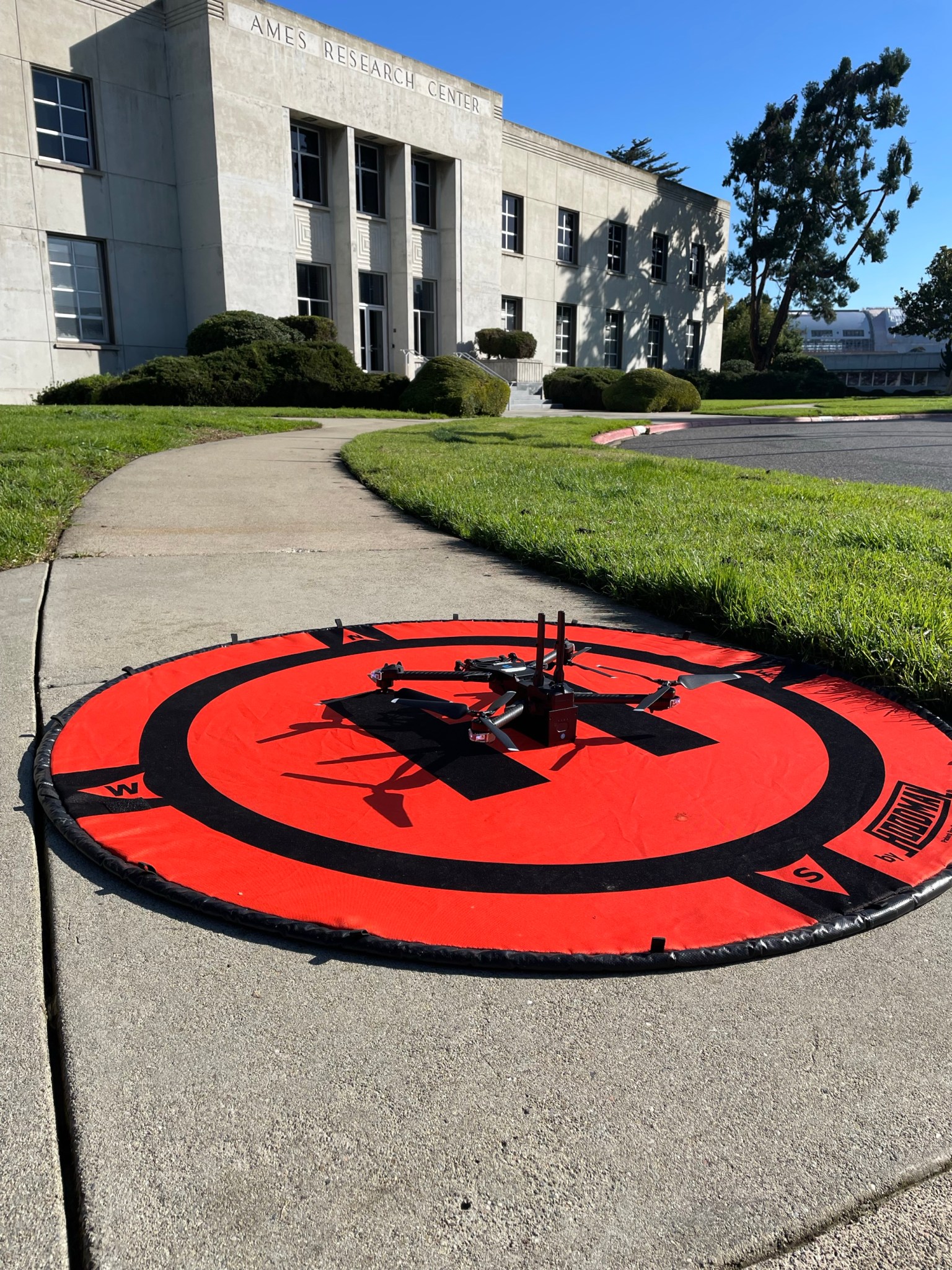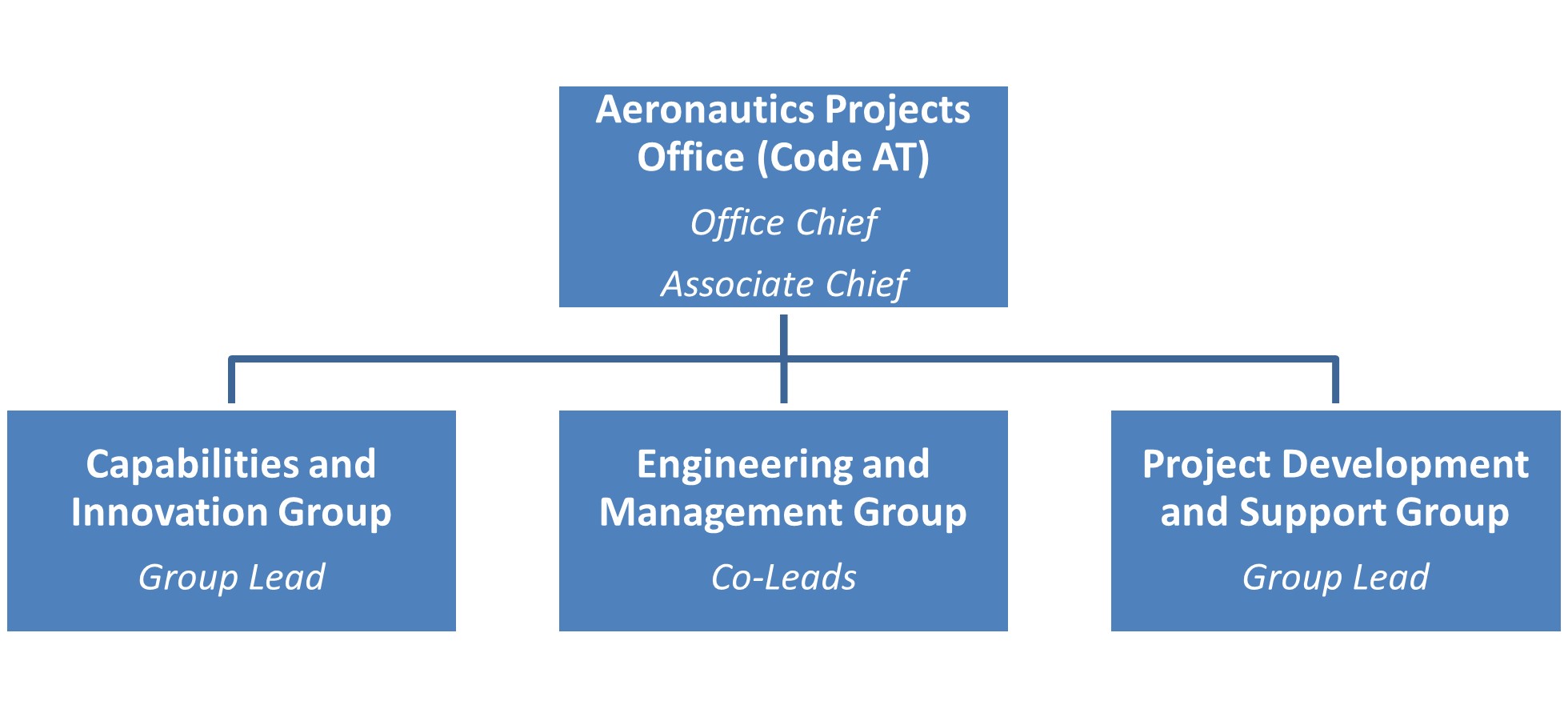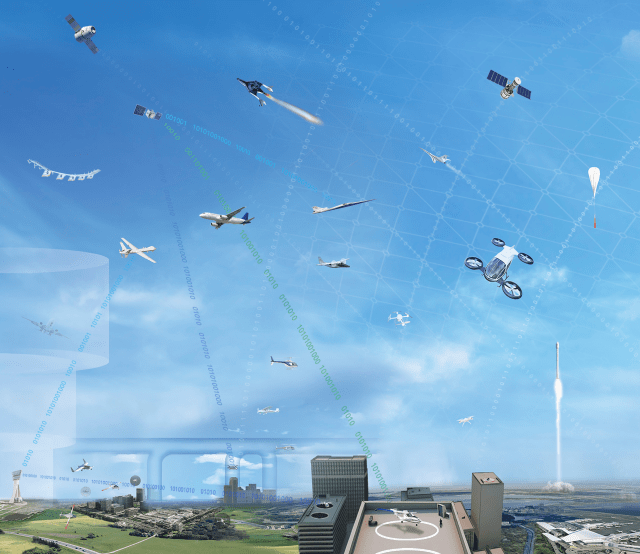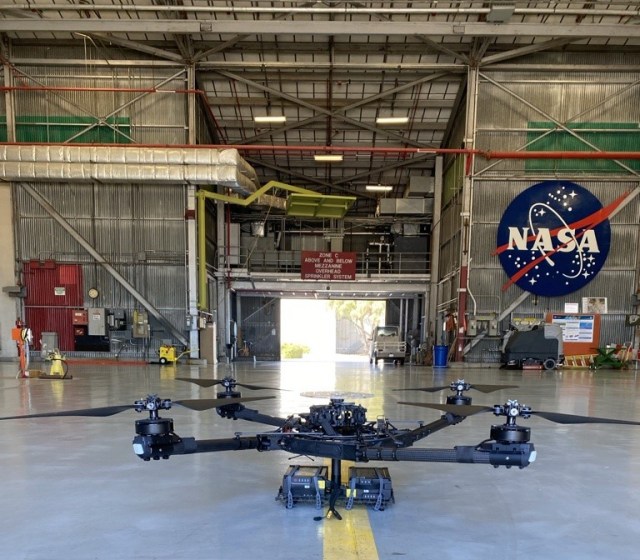More About the Aeronautics Projects Office
The Aeronautics Projects Office (Code AT) focuses on research and technology projects that improve the efficiency, safety, and adaptability of air transportation through advances in concepts and technologies, aeronautics and aerospace systems analysis tools, and new flight vehicle concepts and systems. The goal is to establish a state-of-the-art integrated flight and simulation environment enabling research in autonomy, sUAS, UAM, and vertiplex operations in a representative urban setting.
Organizational Chart
The Office organization consists of the Aeronautics Projects Office (Code AT) and three function support groups made up of the Capabilities and Innovation Group, the Engineering and Management Group, and the Project Development and Support Group.
Capabilities and Innovation Group – Smart Mobility@Ames, Data and Reasoning Fabric, Secure Airspace Technology, and Collaboration Laboratories
Engineering and Management Group – Project Management, HQ Support, and Systems Engineering
Systems Engineering (SE) was established in 2019 to merge the systems engineers across projects, build a community, increase skills, share lessons learned, and reduce duplicated efforts.
Project Development and Support Group – Project Administration, Collaborative and Virtual Technologies, Flight Operations, and Development support
CODE AT SUPPORTS MULTIPLE PROJECTS AND ACTIVITIES (INCLUDING BUT NOT LIMITED TO):
Air Mobility Pathfinders (AMP) Advanced Mobility Pathfinders develops and implements an environment to accelerate development and operational adoption concepts, including developing and demonstrating key automation functions, and deliver validated system architecture and requirements to the benefit of the AMP ecosystem.
Advanced Capabilities for Emergency Response Operations (ACERO) ACERO’s goal is to develop, demonstrate, and transition to operations, emerging aviation technologies to identify, monitor, and suppress wildland fires, as a mean to enhance safety, improve efficiency, and prevent economic loss.
Air Traffic Management – eXploration (ATM-X) will transform the air traffic management system to safely accommodate the growing demand of new air vehicles to enter the airspace to perform a variety of missions.
Data & Reasoning Fabric (DRF) activity is developing a trusted service discovery and exchange backbone to manage complex and dense airspace operations.
Secure Airspace Technology (SAT) goal is to develop and demonstrate capabilities, in order to provide requirements for secure data integrity, resiliency, and information privacy to Urban Air Mobility environments.
Low Boom Flight Demonstrator (LBFD)
Unmanned Aircraft Systems (UAS) Traffic Management (UTM)
Smart Mobility @ Ames (SM@A) was created to serve as the Ames Research Center’s Aeronautics Research Directorate’s executive agent for enabling aeronautics research activities that involve live flight of vehicles, including non-NASA partners.

































